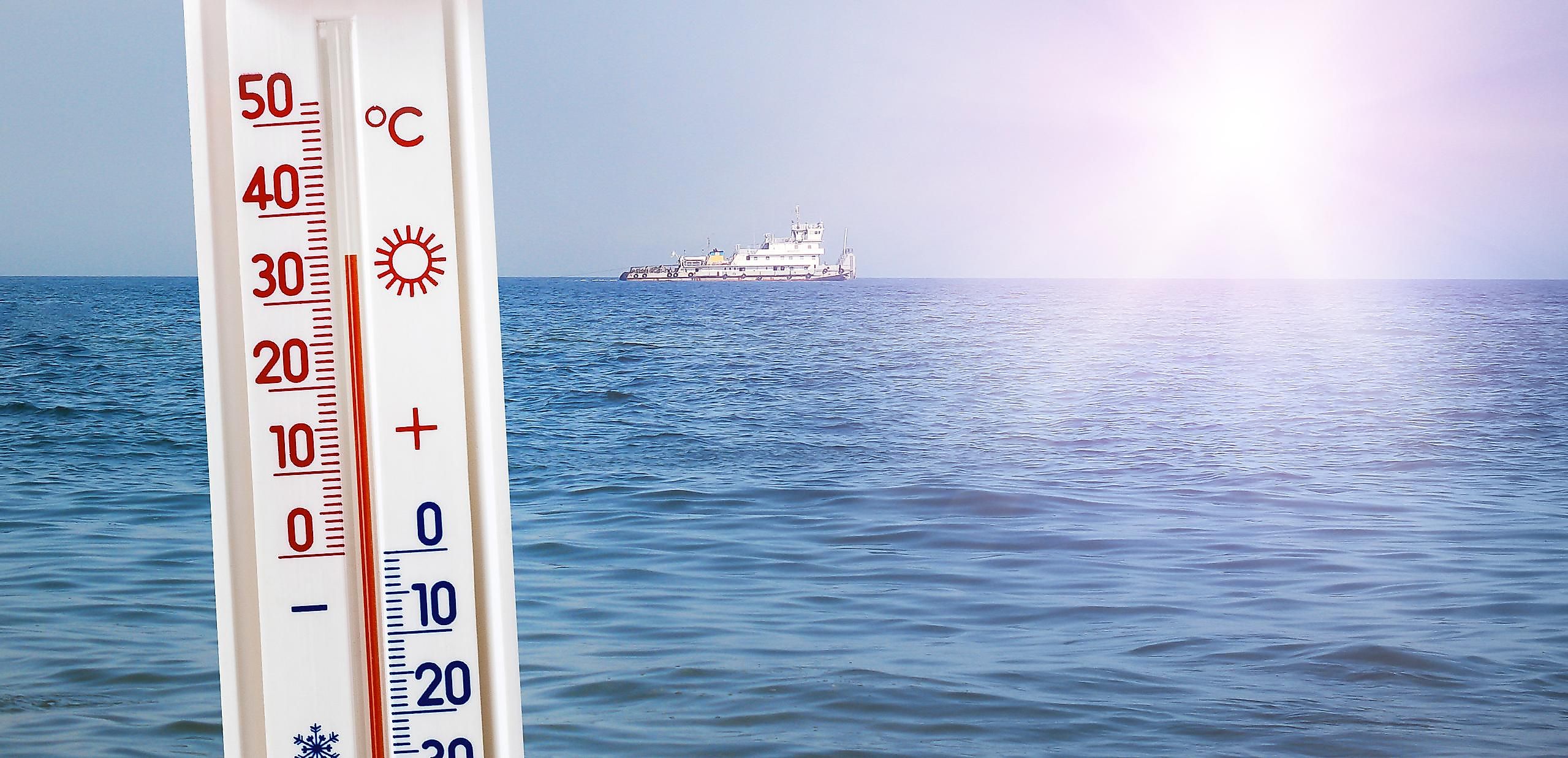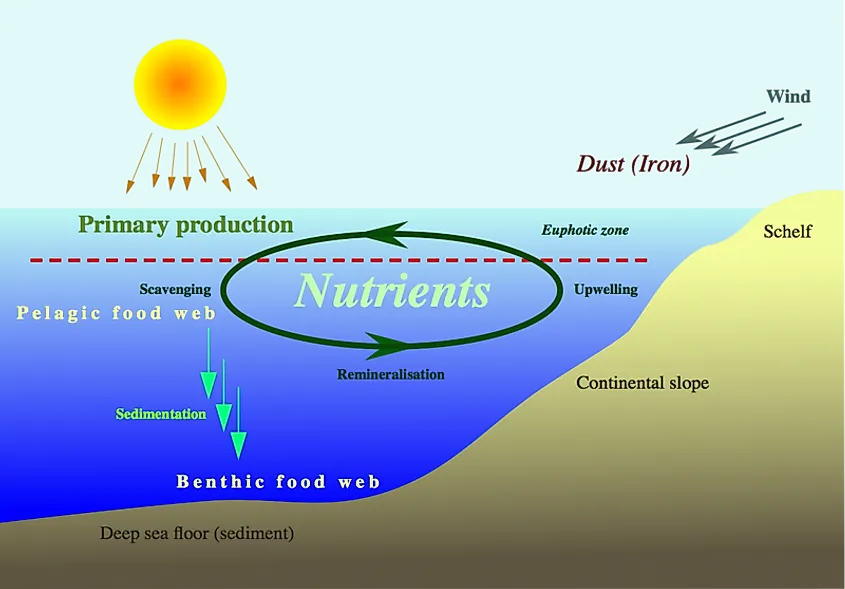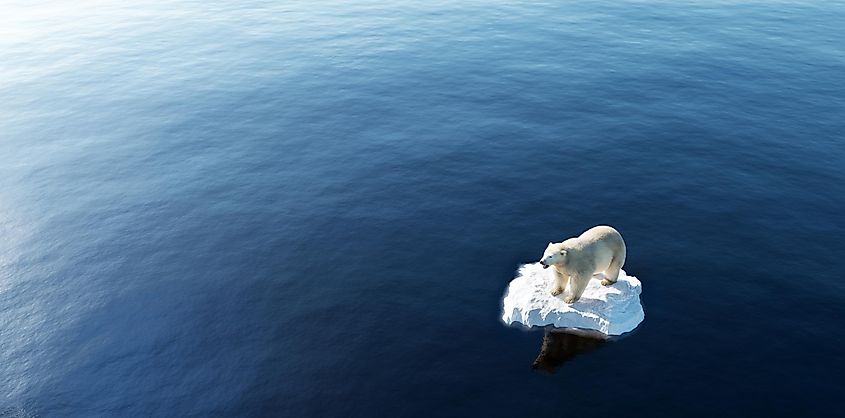
Ocean Heat and Nutrient Transport
Oceans are one of the most distinctive features of the Earth. Covering about 70.8% of the planet’s surface and containing 97% of its water, oceans are fundamental to life on the Blue Planet. Functioning as a huge heat reservoir, oceans absorb enormous quantities of solar energy, which in turn influences the climate and weather patterns throughout the globe. Presently, increasing amounts of greenhouse gases are not allowing the heat radiated from the Earth’s surface to escape into Space freely. Thus, most of this increased atmospheric heat is transferred back to the oceans. This vast amount of heat absorbed by the oceans is distributed worldwide by the Global Ocean Conveyor Belt or the Thermohaline Circulation. Moreover, the surface ocean is also supplied with vital nutrients by this ocean circulation which helps in fuelling global ocean productivity.
Ocean Heat Transport

It is to be noted that a significant amount of sunlight reaching the Earth’s surface is stored in our oceans, while heat from the atmosphere is also absorbed by the oceans, further increasing its temperature. The total amount of solar energy absorbed and stored by the oceans is known as the ocean heat content. In the tropics, the sea surface temperature rises above 86°F, whereas close to the poles, the temperature is about 28°F keeping in equilibrium with the sea ice. In recent decades, anthropogenic global warming caused by greenhouse gas emissions has significantly increased the upper ocean heat content. It has been recorded that between 1971 and 2018, more than 90% of the planet’s excess heat trapped by the atmosphere was absorbed by the oceans.
As mentioned earlier, Thermohaline Circulation, with the help of ocean currents, helps in transporting this absorbed heat all over the planet. Studies have revealed that the ocean transports approximately 3 PW of heat from the tropics by shallow wind-driven gyres and deep circulations associated with high-latitude convections. The solar energy absorbed by the oceans is quite intense in the equatorial regions, where the waters close to the surface are heated the most, as the Sun’s rays strike directly overhead. As a result, the tropics receive a lot of energy per unit area compared to the high latitudes. Therefore, the atmosphere of the Earth emits infrared long-wave thermal radiation to balance the visible incoming short-wave solar radiation.
The ocean currents carry the less-dense warm waters to the poles. The poleward transport of heat by the oceans thus serves as an integral component of the Earth’s energy balance and helps reduce the temperature contrast between the high and low latitudes. To make space for the incoming warm waters, the cooler and denser water of the poles sinks down and moves back towards the Equator. As this cool, dense water moves downwards, it mixes with the warm waters, which then upwells to the surface.
Ocean Nutrient Transport

Essential nutrients such as nitrate, phosphate, and silicic acid are found in deep-ocean waters. This nutrient-rich water is then upwelled to the surface where the phytoplankton uses it. The nutrients in the ocean are cycled by a process referred to as biological pumping, while the phytoplankton extracts the nutrients from the surface water and, along with the incoming solar radiation and dissolved carbon dioxide, produce organic compounds by photosynthesis. When the plants die and decay, these nutrients are returned to the deeper ocean layers in their dissolved states.
By sensing the distribution of chlorophyll, scientists can map primary production in the oceans by satellites. It is to be noted that the coastal margins have the highest abundance of chlorophyll, as nutrients are supplied here to the upper oceans via coastal upwelling, as well as terrestrial and riverine discharge. Besides this, the upwelling zones also have high chlorophyll levels, as here localized upwelling due to the cyclonic mesoscale eddies and fronts vertically transports nutrients from the nutrient-rich subsurface to the epipelagic zone.
How Climate Change Affects Ocean Heat And Nutrient Transport

The excessive emission of greenhouse gases like carbon dioxide and methane due to anthropogenic activities is the main factor leading to the warming of the oceans. Studies have revealed that approximately 25% of all carbon-dioxide emissions caused by human activities are absorbed by the oceans. With the rise in air temperatures, the ocean surface also warms, which in turn increases temperature stratification. This decline in the mixing of the ocean layers leads to the stabilization of warm water close to the surface while reducing the circulation of cold, deep ocean waters. As a result, the ability of the ocean to absorb heat is greatly reduced. Therefore, with a further rise in temperature, the amount of energy for the formation of tropical storms and cyclones will significantly increase, while the quantity of nutrients in the upper ocean waters as well as the ocean’s capacity to store carbon, is expected to decrease.
Moreover, as warm waters cannot hold much oxygen, this will reduce oxygen levels in the ocean while increasing it in the atmosphere. Due to increased thermal stratification, there will be a reduction in the supply of oxygen from the surface to the deep waters, further lowering the oxygen content of the ocean waters. All the above-mentioned changes in the ocean brought about by climate change will eventually harm the marine ecosystems altering species distribution and causing the extinction of several notable marine species.










